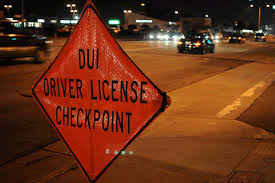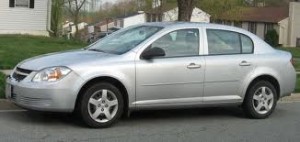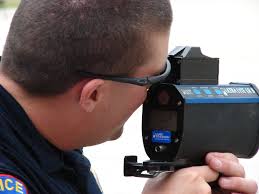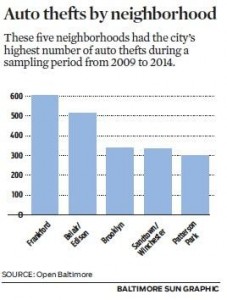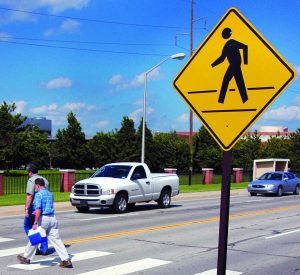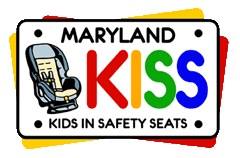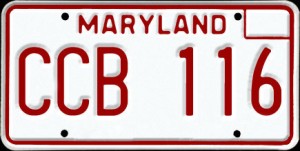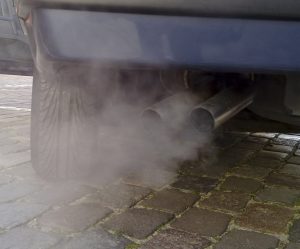View current auto insurance rates in Maryland from major carriers. With the help of the State DOI, shown below are costs of coverage for many scenarios in several counties. By comparing before you purchase, you may reduce your policy premium by hundreds or thousands of dollars.
Multiple factors impact premiums, including age, marital status, gender, make and model of vehicle, credit standing, and prior coverage. Flexible payment options are made available by all companies, including monthly payments with a low initial payment. Full, limited, or rejection of PIP benefits will impact the policy cost.
The Maryland Automobile Insurance Fund (MAIF) offers the lowest available liability limits ($30,000/$60,000/$15,000). Higher limits are also available to some drivers. High-risk drivers in Maryland are able to obtain coverage for financed or paid-off vehicles.
Prices shown are annual Maryland car insurance premiums for many hypothetical households. Most carriers offer a monthly billing option and additional discounts that may not have been included in the illustrated rates.
Unmarried 19-year-old female. Drives 2008 Toyota Camry to work and approximately 15,000 miles per year. No moving violations within the last 36 months. Liability and UM limits are $30,000/$60,000/$15,000 with $2,500 Personal Injury Protection (PIP). Collision and comprehensive deductibles are $500 and $250.
Washington County
$1,869 – AIG
$2,225 – Horace Mann
$2,234 – Berkley Insurance
$2,662 – Noblr Insurance Exchange
$2,694 – Erie
$2,764 – Brethren Mutual
$2,815 – Teachers Insurance
$2,875 – State Farm
$2,898 – Geico
$2,944 – Southern Insurance Company Of Virginia
$2,973 – USAA
$3,126 – Progressive Select
$3,318 – NJM Insurance
$3,612 – Cincinnati Casualty
$3,625 – Branch Insurance Exchange
$3,793 – AIG Property And Casualty
$4,442 – Farmers
$4,713 – Unitrin
$4,805 – Clearcover Insurance
$5,025 – American States Preferred
Garrett County
$2,348 – Horace Mann
$2,458 – Teachers Insurance
$2,503 – State Farm Mutual
$2,534 – Southern Insurance Company Of South Carolina
$2,643 – USAA
$2,668 – Erie
$2,818 – Geico
$3,068 – Brethren Mutual
$3,107 – Progressive Select
$3,134 – USAA Casualty
$3,318 – NJM Insurance
$3,696 – American National
$3,790 – Cincinnati Insurance
$3,812 – American Family Connect
$4,442 – Farmers Insurance Direct
$4,558 – Travelers Insurance
$5,097 – Encompass
$5,338 – Elephant Insurance
$6,435 – Nationwide
$8,915 – Liberty Mutual
Frederick County
$1,869 – AIG Property Casualty
$2,234 – Berkley Insurance
$2,349 – Horace Mann
$2,444 – State Farm
$2,470 – Brethren Mutual
$2,493 – Teachers Insurance
$2,744 – Erie
$2,863 – USAA
$3,114 – Geico
$3,145 – Southern Insurance Company Of Virginia
$3,477 – Progressive Select
$3,640 – American Family
$3,984 – Farmers
$4,150 – NJM Insurance
$4,220 – American National
$4,691 – Maryland Auto Insurance Fund
$4,780 – Progressive Specialty
$5,593 – Amica
$6,028 – Penn National
$9,306 – Liberty Mutual
Caroline County
$1,288 – USAA
$1,703 – Horace Mann
$1,979 – USAA Casualty
$2,008 – Progressive Select
$2,062 – State Farm
$2,118 – Progressive Specialty
$2,232 – Brethren Mutual
$2,290 – Safe Auto
$2,395 – AIG
$2,402 – Erie
$2,633 – American States
$3,995 – Nationwide
Unmarried 23-year-old female. Drives 2012 Jeep Liberty to work and approximately 15,000 miles per year. One moving violation within the last 36 months. Liability and UM limits are $30,000/$60,000/$15,000 with $2,500 Personal Injury Protection (PIP). Collision and comprehensive deductibles are $500 and $250.
Washington County
$1,065 – USAA
$1,213 – Geico Casualty
$1,418 – USAA Casualty
$1,475 – Horace Mann
$1,541 – AIG
$1,713 – State Farm Mutual
$1,908 – Cumberland
$2,100 – Erie
$2,171 – Privilege Underwriters
$2,214 – Encompass
$2,400 – American Family
$2,470 – Allstate
Allegany County
$968 – USAA
$1,286 – Geico Casualty
$1,378 – Progressive Select
$1,399 – USAA Casualty
$1,459 – American States
$1,539 – State Farm Mutual
$1,545 – Horace Mann
$1,804 – Mutual Benefit
$2,134 – Erie
$2,354 – American National
$2,447 – Encompass
$4,175 – Farmers
Frederick County
$1,083 – USAA
$1,122 – Geico Casualty
$1,402 – American States
$1,515 – USAA Casualty
$1,515 – State Farm
$1,538 – Horace Mann
$1,541 – AIG Property Casualty
$1,571 – Progressive Select
$1,676 – Safe Auto
$1,692 – Teachers Insurance
$1,946 – Cumberland
$2,193 – Erie
Worcester County
$1,016 – USAA
$1,184 – Geico Casualty
$1,311 – American States
$1,398 – USAA Casualty
$1,413 – Progressive Select
$1,464 – Horace Ann
$1,505 – State Farm
$1,539 – Progressive Specialty
$1,816 – Cumberland
$1,973 – Mutual Benefit
$2,226- Maryland Auto Insurance Fund
$2,319 – Erie
Talbot County
$1,003 – Amica
$1,409 – American States
$1,411 – State Farm
$1,415 – Root Insurance
$1,464 – Horace Mann
$1,545 – Progressive Select
$1,631 – USAA
$1,728 – USAA Casualty
$1,763 – Integon Indemnity
$1,863 – Geico Secure
$2,319 – Erie
$2,760 – Liberty Mutual
Dorcester County
$1,409 – American States
$1,464 – Horace Mann
$1,476 – Root Insurance
$1,635 – Progressive Select
$1,648 – USAA
$1,768 – Geico Secure
$1,776 – Amica
$1,878 – Cumberland Insurance
$2,222 – Integon Indemnity
$2,424 – American Family
$2,505 – Allstate Indemnity
$3,120 – State Farm
Unmarried 30-year-old male. Drives 2015 Toyota RAV4 to work and approximately 25,000 miles per year. No moving violations within the last 36 months. Liability and UM limits are $100,000/$300,000/$100,000 with $2,500 Personal Injury Protection (PIP). Collision and comprehensive deductibles are $500 and $250.
Garrett County
$862 – Progressive Select
$1,077 – Geico Casualty
$1,095 – Horace Mann
$1,117 – Encompass
$1,146 – Cumberland Insurance
$1,153 – Progressive Specialty
$1,222 – USAA
$1,222 – Nationwide
$1,316 – State Farm Mutual
$1,366 – Erie
Saint Mary’s County
$937 – Progressive Select
$1,052 – Geico Casualty
$1,120 – IDS Property And Casualty
$1,203 – Horace Mann
$1,240 – Nationwide Property And Casualty
$1,250 – Root Insurance
$1,340 – Cumberland
$1,383 – USAA
$1,489 – State Farm Mutual
$1,493 – Erie
Howard County
$941 – Progressive Select
$1,206 – IDS Property Casualty
$1,203 – Horace Mann
$1,256 – Geico Casualty
$1,258 – Cumberland Insurance
$1,429 – USAA
$1,474 – Amica Mutual
$1,575 – Nationwide
$1,702 – Encompass
$1,735 – CSAA General
Carroll County
$917 – Progressive Select
$1,187 – Horace Mann
$1,204 – Geico Casualty
$1,221 – Cumberland Insurance
$1,324 – Nationwide
$1,408 – USAA
$1,461 – USAA Casualty
$1,488 – Emcompass
$1,601 – State Farm
$1,710 – Teachers Insurance
Wicomico County
$756 – Progressive Select
$970 – Geico
$1,032 – Horace Mann
$1,097 – Cumberland
$1,148 – Nationwide
$1,189 – Progressive Specialty
$1,176 – IDS Property Casualty
$1,201 – Root Insurance
$1,301 – USAA
$1,418 – State Farm
Kent County
$783 – Progressive Select
$962 – Geico
$1,051 – Progressive Specialty
$1,128 – Cumberland
$1,187 – USAA
$1,414 – American National Property And Casualty
$1,395 – Brethren Mutual
$1,427 – Erie
$1,459 – Encompass
$1,462 – Amica Mutual
Unmarried 30-year-old female. Drives 2016 Nissan Altima to work and approximately 15,000 miles per year. No moving violations within the last 36 months. Liability and UM limits are $100,000/$300,000/$100,000 with $2,500 Personal Injury Protection (PIP). Collision and comprehensive deductibles are $500 and $250.
Calvert County
$672 – Progressive Select
$947 – Root Insurance
$983 – Progressive Specialty
$1,021 – USAA
$1,041 – USAA Casualty
$1,118 – IDS Property And Casualty
$1,171 – Geico Casualty
$1,173 – Encompass
$1,252 – Nationwide Property And Casualty
$1,257 – Mutual Benefit
Washington County
$661 – Progressive Select
$777 – Encompass
$818 – Horace Mann
$873 – Progressive Specialty
$904 – Erie
$965 – USAA
$981 – USAA Casualty
$983 – Root Insurance
$990 – Cumberland
$4,543 – Maryland Auto Insurance Fund
Anne Arundel County
$716 – Progressive Select
$957 – Progressive Specialty
$970 – Root Insurance
$1,024 – USAA
$1,087 – USAA Casualty
$1,116 – Encompass
$1,160 – Geico Casualty
$1,182 – Erie
$1,217 – Selective Insurance Company
$1,261 – Cincinnati
Cecil County
$729 – Progressive Select
$1,052 – American National
$1,073 – Cumberland
$1,075 – Root Insurance
$1,130 – Erie
$1,182 – USAA Casualty
$1,257 – Geico Casualty
$1,310 – Old Dominion
$1,325 – Penn National
$1,340 – IDS Property Casualty
Caroline County
$727 – Progressive Select
$812 – Horace Mann
$876 – USAA
$886 – American National Property Casualty
$974 – Cumberland
$985 – Erie
$987 – Geico
$1,119 – Encompass
$1,387 – Travelers
$1,630 – Farmers
Somerset County
$797 – Progressive Select
$812 – Horace Mann
$914 – American National Property Casualty
$985 – Erie
$1,001 – USAA
$1,011 – Root Insurance
$1,119 – Encompass
$1,812 – Donegal Mutual
$1,207 – Nationwide
$3,411 – Elephant
Unmarried 40-year-old male. Drives 2015 Nissan Sentra to work and approximately 15,000 miles per year. No moving violations within the last 36 months. Liability and UM limits are $100,000/$300,000/$100,000 with $2,500 Personal Injury Protection (PIP). Collision and comprehensive deductibles are $500 and $250.
St. Mary’s County
$1,029 – Progressive Select
$1,076 – IDS Property Casualty
$1,107 – Horace Mann
$1,153 – Cincinnati
$1,159 – Geico Casualty
$1,214 – USAA
$1,339 – Cumberland
$1,356 – USAA Casualty
$1,381 – Root Insurance
$1,390 – Erie
Charles County
$1,141 – Cincinnati
$1,364 – IDS Property Casualty
$1,372 – Cumberland
$1,393 – USAA
$1,525 – Geico Casualty
$1,574 – USAA Casualty
$1,826 – Progressive Specialty
$1,867 – State Farm
$1,944 – American National
$1,948 – Nationwide
Harford County
$1,091 – Progressive Select
$1,175 – Horace Mann
$1,191 – Cincinnati
$1,226 – Cumberland
$1,228 – IDS Property Casualty
$1,249 – USAA
$1,371 – Geico Casualty
$1,553 – Root Insurance
$1,571 – Erie
$1,608 – Nationwide
Baltimore County
$1,416 – Horace Mann
$1,567 – Cincinnati
$1,691 – USAA
$1,714 – Geico Casualty
$1,714 – IDS Property Casualty
$1,878 – Root Insurance
$1,968 – Erie
$2,097 – State Farm
$2,226 – Teachers Insurance
$2,490 – Mutual Benefit
Talbot County
$811 – Progressive Select
$984 – IDS Property Casualty
$1,023 – Cincinnati
$1,059 – Geico
$1,087 – USAA
$1,175 – State Farm
$1,208 – USAA Casualty
$1,316 – Erie
$1,356 – American National
$1,661 – Integon
Worcester County
$949 – Horace Mann
$845 – Progressive Select
$1,022 – IDS Property Casualty
$1,046 – Cincinnati
$1,065 – Geico Casualty
$1,097 – Cumberland
$1,106 – Progressive Specialty
$1,203 – USAA Casualty
$1,316 – Erie
$1,730 – Amica Mutual
Unmarried 40-year-old female. Drives 2016 Toyota Prius to work and approximately 15,000 miles per year. No moving violations within the last 36 months. Liability and UM limits are $100,000/$300,000/$100,000 with $2,500 Personal Injury Protection (PIP). Collision and comprehensive deductibles are $500 and $250.
Garrett County
$710 – Progressive Select
$749 – Horace Mann
$810 – American National
$814 – USAA
$823 – Cumberland
$846 – Encompass
$898 – State Farm Mutual
$908 – Erie
$940 – USAA Casualty
$956 – Cincinnati Insurance
Montgomery County
$713 – Progressive Select
$773 – Horace Mann
$824 – Geico Casualty
$921 – Cumberland
$942 – USAA
$956 – IDS Property Casualty
$962 – American National Property And Casualty
$995 – Progressive Specialty
$1,045 – Cincinnati
$1,141 – Mutual Benefit
Frederick County
$679 – Progressive Select
$824 – Cumberland
$861 – USAA
$864 – State Farm
$866 – IDS Property Casualty
$917 – Cincinnati
$919 – Erie
$929 – USAA Casualty
$976 – Brethren Mutual
$1,060 – Encompass
Cecil County
$714 – Progressive Select
$962 – USAA
$1,020 – Old Dominion
$1,061 – USAA Casualty
$1,101 – Root Insurance
$1,127 – Cincinnati
$1,152 – Mutual Benefit
$1,162 – Penn National
$1,198 – Nationwide
$1,199 – State Farm
Kent County
$653 – Progressive Select
$793 – USAA
$806 – Cumberland
$828 – Geico Casualty
$836 – American National Property And Casualty
$853 – State Farm
$860 – IDS Property Casualty
$943 – Cincinnati
$953 – Erie
$1,339 – Farmers
Queen Anne’s County
$647 – Progressive Select
$710 – Horace Mann
$806 – Cumberland
$830 – USAA
$828 – Geico Casualty
$851 – USAA Casualty
$958 – State Farm
$992 – CSAA General
$1,005 – Nationwide
$1,478 – Metropolitan Group
Unmarried 50-year-old male. Drives 2017 Ford F-250 to work and approximately 25,000 miles per year and 2012 Honda CR-V approximately 3,000 miles per year. No moving violations within the last 36 months. Liability and UM limits are $100,000/$300,000/$100,000 with $2,500 Personal Injury Protection (PIP). Collision and comprehensive deductibles are $500 and $250.
Allegany County
$891 – Progressive Select
$948 – Cumberland
$1,057 – CSAA General
$1,062 – American National Property And Casualty
$1,120 – Progressive Specialty
$1,197 – Erie
$1,260 – Old Dominion
$1,271 – Penn National
$1,294 – USAA
$1,332 – Travelers
Washington County
$817 – Privilege Underwriters
$916 – Progressive Select
$1,072 – American National Property And Casualty
$1,077 – CSAA General
$1,143 – Erie
$1,204 – Old Dominion
$1,210 – Mutual Benefit
$1,291 – Selective Insurance Co. Of SC
$1,371 – Geico Casualty
$1,380 – Meridian Security
Anne Arundel County
$980 – Progressive Select
$1,137 – CSAA General
$1,240 – American National Property And Casualty
$1,256 – Progressive Specialty
$1,276 – Selective Insurance
$1,321 – Brethren Mutual
$1,336 – Cincinnati
$1,337 – Horace Mann
$1,416 – Mutual Benefit
$1,618 – Penn National
Carroll County
$1,003 – Cumberland
$1,060 – CSAA General
$1,071 – Progressive Select
$1,195 – Selective Insurance
$1,230 – American National Property And Casualty
$1,294 – Mutual Benefit
$1,346 – Cincinnati
$1,470 – Erie
$1,479 – USAA Casualty
$1,619 – Geico Casualty
Caroline County
$934 – Cumberland
$1,008 – Progressive Select
$1,055 – Progressive Specialty
$1,090 – American National Property And Casualty
$1,194 – CSAA General
$1,210 – Horace Mann
$1,216 – Mutual Benefit
$1,254 – Erie
$1,320 – USAA
$1,528 – Travelers
Somerset County
$911 – Cumberland
$1,108 – Progressive Select
$1,118 – American National Property And Casualty
$1,210 – Horace Mann
$1,216 – Mutual Benefit
$1,247 – CSAA General
$1,254 – Erie
$1,353 – Geico
$1,676 – Travelers
$1,948 – Esurance
Unmarried 50-year-old female. Drives 2014 Hyundai Elantra to work and approximately 20,000 miles per year. No moving violations within the last 36 months. Liability and UM limits are $100,000/$300,000/$100,000 with $2,500 Personal Injury Protection (PIP). Collision and comprehensive deductibles are $500 and $250.
Saint Mary’s County
$1,028 – Geico Casualty
$1,132 – IDS Property Casualty
$1,148 – Progressive Select
$1,180 – Horace Mann
$1,272 – USAA Casualty
$1,356 – Cumberland
$1,391 – Mutual Benefit
$1,450 – Root Insurance
$1,460 – USAA General Indemnity
$1,542 – Nationwide
Charles County
$1,200 – Progressive Select
$1,359 – USAA
$1,368 – Geico Casualty
$1,423 – Horace Mann
$1,479 – USAA Casualty
$1,560 – Amica Mutual
$1,606 – Cincinnati
$1,633 – Root Insurance
$1,689 – USAA General Indemnity
$1,724 – Mutual Benefit
Frederick County
$1,010 – Progressive Select
$1,028 – Horace Mann
$1,076 – IDS Property Casualty
$1,117 – USAA
$1,199 – USAA Casualty
$1,208 – Mutual Benefit
$1,319 – Amica Mutual
$1,398 – State Farm
$1,408 – Nationwide
$1,488 – Erie
Baltimore County
$1,423 – Progressive Select
$1,534 – Horace Mann
$1,557 – Geico Casualty
$1,634 – USAA
$1,795 – USAA Casualty
$1,797 – Amica Mutual
$1,824 – IDS Property Casualty
$2,221 – Erie
$2,407 – Nationwide
$2,684 – AIG
Dorchester County
$945 – Progressive Select
$954 – Geico
$1,006 – Horace Mann
$1,101 – USAA
$1,139 – Cumberland
$1,175 – USAA Casualty
$1,192 – IDS Property Casualty
$1,253 – Mutual Benefit
$1,355 – Amica Mutual
$1,735 – American States
Wicomico County
$954 – Geico
$954 – Progressive Select
$1,006 – Horace Mann
$1,109 – Cumberland
$1,122 – USAA
$1,202 – USAA Casualty
$1,429 – Nationwide
$1,558 – Penn National
$1,594 – State Farm
$1,596 – Meridian Security
Unmarried 65-year-old male. Drives 2012 Ford Escape approximately 5,000 miles per year. No moving violations within the last 36 months. Liability and UM limits are $100,000/$300,000/$100,000 with $2,500 Personal Injury Protection (PIP). Collision and comprehensive deductibles are $500 and $250.
Calvert County
$532 – Cumberland
$533 – Progressive Select
$562 – American National Property And Casualty
$584 – Brethren Mutual
$606 – Mutual Benefit
$617 – USAA Casualty
$634 – USAA
$640 – Horace Mann
$658 – Root Insurance
$671 – Erie
St. Mary’s County
$532 – Cumberland
$534 – American National Property And Casualty
$547 – Brethren Mutual
$600 – Geico Casualty
$606 – Mutual Benefit
$616 – Progressive Select
$626 – USAA
$640 – Horace Mann
$651 – USAA Casualty
$666 – IDS Property Casualty
Anne Arundel County
$525 – Brethren Mutual
$562 – American National Property Casualty
$588 – Progressive Select
$605 – Cumberland
$650 – USAA
$660 – USAA Casualty
$673 – Mutual Benefit
$680 – Geico Casualty
$680 – IDS Property Casualty
$775 – Erie
Frederick County
$482 – American National Property And Casualty
$527 – AIG Property Casualty
$544 – Mutual Benefit
$566 – Progressive Select
$569 – Atlantic States
$569 – Geico Casualty
$605 – USAA
$610 – Erie
$628 – IDS Property Casualty
$632 – Cincinnati
Talbot County
$448 – Cumberland
$456 – Brethren Mutual
$462 – American National Property And Casualty
$501 – Progressive Select
$545 – Geico
$567 – Mutual Benefit
$571 – USAA
$602 – State Farm
$700 – Metropolitan Direct
$1,024 – Hartford
Worcester County
$434 – Cumberland
$519 – Progressive Select
$538 – Mutual Benefit
$552 – Horace Mann
$559 – Geico
$563 – Atlantic States
$580 – USAA
$618 – IDS Property Casualty
$637 – Erie
$911 – Teachers Insurance
Unmarried 65-year-old Female. Drives 2017 Toyota Camry approximately 5,000 miles per year. No moving violations within the last 36 months. Liability and UM limits are $100,000/$300,000/$100,000 with $2,500 Personal Injury Protection (PIP). Collision and comprehensive deductibles are $500 and $250.
Washington County
$738 – American National Property And Casualty
$745 – Encompass
$765 – Progressive Select
$779 – Geico Casualty
$794 – Erie
$802 – Horace Mann
$828 – AIG Property Casualty
$841 – Root Insurance
$853 – USAA Casualty
$871 – USAA
Garrett County
$742 – American National Property And Casualty
$812 – Encompass
$816 – USAA
$819 – Progressive Select
$833 – Erie
$844 – Horace Mann
$848 – Geico Casualty
$909 – Root Insurance
$913 – USAA Casualty
$1,148 – Hartford Casualty
Cecil County
$837 – Progressive Select
$912 – American National Property And Casualty
$924 – Root Insurance
$949 – Brethren Mutual
$963 – USAA
$976 – Geico Casualty
$993 – Erie
$1,002 – Horace Mann
$1,192 – Old Dominion
$1,252 – Penn National
Carroll County
$849 – Brethren Mutual
$890 – American National Property And Casualty
$908 – Progressive Select
$910 – USAA Casualty
$913 – Horace Mann
$936 – Geico Casualty
$940 – USAA
$1,013 – Erie
$1,054 – Atlantic States
$1,084 – Encompass
Kent County
$752 – Progressive Select
$757 – Geico
$770 – American National Property And Casualty
$789 – USAA
$821 – Root Insurance
$854 – USAA Casualty
$862 – IDS Property Casualty
$865 – Erie
$1,081 – Penn National
$1,323 – Teachers Insurance
Queen Anne’s County
$750 – Root Insurance
$754 – American National Property And Casualty
$754 – Progressive Select
$757 – Geico
$828 – USAA
$865 – Erie
$1,003 – Atlantic States
$1,035 – Cumberland
$1,197 – CSAA General
$1,694 – Allstate
Married 29-year-old male and female. Drives 2011 Chevrolet Silverado 1500 and 2014 Dodge Grand Caravan approximately 15,000 and 5,000 miles per year. No moving violations within the last 36 months. Liability and UM limits are $30,000/$60,000/$15,000 with $2,500 Personal Injury Protection (PIP). Collision and comprehensive deductibles are $500 and $250.
Allegany County
$1,388 – Cincinnati
$1,398 – Progressive Select
$1,535 – Geico Casualty
$1,548 – Progressive Specialty
$1,594 – American National Property And Casualty
$1,714 – USAA
$1,724 – IDS Property Casualty
$1,799 – Mutual Benefit
$1,836 – Garrison Property And Casualty
$1,898 – Meridian Security
Montgomery County
$1,345 – AIG
$1,392 – Geico Casualty
$1,490 – Cincinnati
$1,608 – Progressive Select
$1,663 – Root Insurance
$1,778 – Progressive Specialty
$2,061 – USAA
$2,151 – Garrison
$2,561 – Amica Mutual
$2,800 – Metropolitan Group
Frederick County
$904 – AIG Property Casualty
$1,278 – Cincinnati
$1,383 – Geico Casualty
$1,538 – Progressive Select
$1,610 – IDS Property Casualty
$1,626 – Root Insurance
$1,662 – Progressive Specialty
$1,678 – American National
$1,888 – USAA
$1,963 – State Farm
Anne Arundel County
$1,412 – Cincinnati
$1,587 – Progressive Select
$1,600 – Root Insurance
$1,618 – Geico Casualty
$1,657 – AIG Property Casualty
$1,718 – IDS Property Casualty
$1,753 – Progressive Specialty
$2,023 – USAA
$2,196 – USAA Casualty
$3,823 – Farmers
Talbot County
$1,322 – Cincinnati
$1,349 – Progressive Select
$1,372 – Geico
$1,570 – IDS Property Casualty
$1,744 – Integon
$1,823 – Horace Mann
$1,826 – USAA
$1,854 – State Farm
$2,022 – Mutual Benefit
$2,059 – Erie
Somerset County
$1,381 – Geico
$1,413 – Cincinnati
$1,662 – AIG Property Casualty
$1,677 – Root Insurance
$1,682 – Progressive Select
$1,842 – Meridian Security
$1,878 – IDS Property Casualty
$1,976 – Mutual Benefit
$1,993 – USAA
$2,430 – Metropolitan Direct
Married 35-year-old male and 32-year-old female. Drives 2010 Dodge Dakota Crew Cab and 2017 Nissan Rogue approximately 35,000 and 15,000 miles per year. No moving violations within the last 36 months. Liability and UM limits are $250,000/$500,000/$100,000 with $2,500 Personal Injury Protection (PIP). Collision and comprehensive deductibles are $500 and $250.
Charles County
$1,030 – Progressive Select
$1,145 – Root Insurance
$1,403 – Horace Mann
$1,464 – CSAA Insurance
$1,513 – Mutual Benefit
$1,588 – Old Dominion
$1,658 – Cincinnati
$1,670 – American Property And Casualty
$1,832 – IDS Property Casualty
$1,991 – USAA
Prince George’s County
$1,254 – Progressive Select
$1,525 – Root Insurance
$1,544 – Horace Mann
$1,702 – CSAA
$1,901 – Progressive Specialty
$2,192 – AIG
$2,207 – Mutual Benefit
$2,242 – Old Dominion
$2,342 – Geico Casualty
$2,456 – Esurance
Howard County
$1,029 – Progressive Select
$1,193 – Horace Mann
$1,223 – CSAA General
$1,307 – Root Insurance
$1,460 – American National
$1,470 – Old Dominion
$1,552 – IDS Property Casualty
$1,644 – Cincinnati
$1,716 – National General
$1,730 – Cumberland
Harford County
$1,059 – Progressive Select
$1,139 – Root Insurance
$1,208 – CSAA General
$1,253 – Horace Mann
$1,380 – Progressive Specialty
$1,553 – Mutual Benefit
$1,650 – IDS Property Casualty
$1,694 – Cincinnati
$1,779 – Erie
$1,930 – Metropolitan Group
Caroline County
$835 – Progressive Select
$1,018 – Root Insurance
$1,035 – Horace Mann
$1,171 – CSAA General
$1,174 – Old Dominion
$1,315 – Integon
$1,359 – Mutual Benefit
$1,416 – IDS Property Casualty
$1,448 – Geico
$1,528 – Esurance
Worcester County
$760 – Progressive Select
$1,035 – Horace Mann
$1,036 – Root Insurance
$1,066 – CSAA General
$1,228 – Old Dominion
$1,348 – Mutual Benefit
$1,462 – Geico
$1,596 – Erie
$1,622 – State Farm
$1,624 – Travelers
Married 50-year-old male and female. Drives 2017 Toyota Avalon and 2008 Toyota Camry approximately 35,000 and 5,000 miles per year. No moving violations within the last 36 months. Liability and UM limits are $100,000/$300,000/$100,000 with $2,500 Personal Injury Protection (PIP). Collision and comprehensive deductibles are $500 and $250.
Washington County
$1,174 – Erie
$1,210 – Progressive Select
$1,274 – American National Property And Casualty
$1,391 – Progressive Specialty
$1,536 – Horace Mann
$1,629 – USAA Casualty
$1,648 – Pharmacists Mutual
$1,667 – Meridian Security
$1,668 – USAA
$1,797 – Mutual Benefit
Garrett County
$1,224 – Erie
$1,290 – American National Property And Casualty
$1,327 – Progressive Select
$1,494 – Progressive Specialty
$1,563 – USAA
$1,622 – Horace Mann
$1,651 – Cumberland
$1,666 – USAA General Indemnity
$1,667 – Root Insurance
$1,789 – State Farm
Cecil County
$1,329 – Progressive Select
$1,479 – Erie
$1,530 – American National Property And Casualty
$1,665 – Root Insurance
$1,671 – Progressive Specialty
$1,807 – Cumberland
$1,847 – USAA
$1,935 – USAA General Indemnity
$1,958 – USAA Casualty
$2,070 – Old Dominion
Anne Arundel County
$1,321 – Progressive Select
$1,510 – American National Property And Casualty
$1,522 – Progressive Specialty
$1,522 – Root Insurance
$1,558 – Erie
$1,732 – Horace Mann
$1,772 – USAA
$1,774 – USAA General Indemnity
$2,103 – Geico Casualty
$2,296 – Nationwide
Wicomico County
$1,019 – Progressive Select
$1,500 – American National Property And Casualty
$1,610 – Root Insurance
$1,632 – USAA
$1,681 – Erie
$1,784 – Meridian Security
$1,799 – Geico
$1,912 – State Farm
$2,038 – Amica
$2,110 – Nationwide
Kent County
$1,053 – Progressive Select
$1,475 – USAA
$1,621 – Integon
$1,643 – Cumberland
$1,680 – State Farm
$1,681 – Erie
$1,769 – Geico
$1,805 – Mutual Benefit
$1,921 – Penn National
$2,090 – Unitrin
Married 65-year-old male and female. Drives 2015 Jeep Grand Cherokee and 2016 Lexus approximately 20,000 and 5,000 miles per year. No moving violations within the last 36 months. Liability and UM limits are $250,000/$500,000/$100,000 with $2,500 Personal Injury Protection (PIP). Collision and comprehensive deductibles are $500 and $250.
Calvert County
$955 – Progressive Select
$1,268 – American Property And Casualty
$1,300 – Erie
$1,311 – Root Insurance
$1,320 – CSAA General
$1,350 – Cumberland Insurance
$1,350 – Horace Mann
$1,383 – Mutual Benefit
$1,681 – Cincinnati
$1,700 – IDS Property Casualty
Montgomery County
$1,031 – Progressive Select
$1,212 – American National Property And Casualty
$1,277 – Horace Mann
$1,321 – Cumberland Insurance
$1,338 – CSAA General
$1,395 – Mutual Benefit
$1,421 – Root Insurance
$1,502 – Erie
$1,674 – AIG Property Casualty
$1,978 – Travelers
Carroll County
$1,066 – CSAA General
$1,129 – Progressive Select
$1,218 – American National Property And Casualty
$1,233 – Cumberland
$1,321 – Mutual Benefit
$1,442 – Erie
$1,445 – Root Insurance
$1,588 – Cincinnati
$1,692 – IDS Property Casualty
$1,882 – Geico Casualty
Baltimore County
$1,352 – Progressive Select
$1,602 – American National Property And Casualty
$1,702 – Horace Mann
$1,775 – Erie
$1,869 – CSAA General
$1,874 – Root Insurance
$1,990 – Brethren Mutual
$2,233 – Penn National
$2,372 – USAA
$2,521 – USAA Casualty
Talbot County
$825 – Progressive Select
$1,082 – CSAA General
$1,147 – Brethren Mutual
$1,172 – Horace Mann
$1,164 – Cumberland
$1,268 – Mutual Benefit
$1,309 – Erie
$1,514 – Geico
$1,551 – State Farm
$1,641 – Travelers
Somerset County
$1,031 – Progressive Select
$1,136 – Cumberland
$1,172 – Horace Mann
$1,186 – American National
$1,200 – CSAA General
$1,246 – Mutual Benefit
$1,309 – Erie
$1,554 – Cincinnati
$1,647 – USAA
$1,892 – Metropolitan Direct
The Department of Insurance provides a Maryland Comparison of Auto Insurance Rates for consumers.




